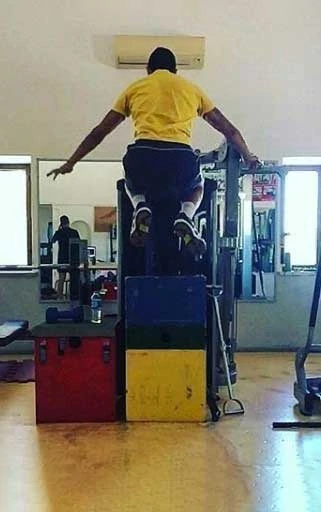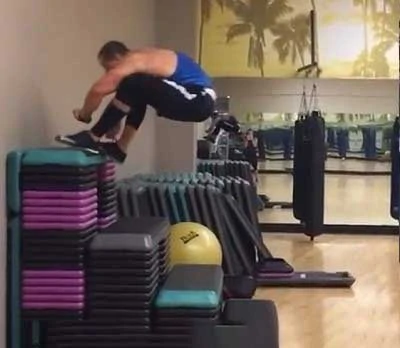What is Plyometrics Training?
Plyometrics is a category of exercises that an athlete can use to increase the power and height of his or her vertical jump. These are high impact exercises meant for individuals who are already in very good shape. The Father of Plyometrics is the Russian Scientist named Professor Yuri Verkhoshansky. He is the one who invented plyometrics training.

It has become a common practice today that athletes who are involved in professional sports make use of plyometric training to help them to reach their maximum physical form and ability.
It is still practically quite a novelty so there is not much research and proven guidelines on which to base specific training sessions. Many coaches use their personal experience to determine the intensity and duration of plyometric training to reach their specific objectives although one can find several basic guidelines which are proposed by the National Strength & Conditioning Association and other experts in this field.
Plyometric training has shown to be very effective for improving one’s performance power. The main purpose of plyometric training is to encourage rapid great force for the reason that the more force an athletic can release from the start the more fruitful his performance will be.
One will find many plyometric exercises which concentrate on strengthening both the upper and lower body. The type of exercises to engage in depends on the type of sport the athletic will be performing in. Lower body plyometric exercises are suitable for sports like basketball, soccer, hockey, football, sprinting etc. In fact, practically all sports which involves jumping, sprinting, kicking or running.
Upper Body Polymetric
Upper body plyometric exercises are ideal for sports which require strength and stamina in the athletics, upper muscles. An athletic who wishes to enhance his performance in basketball, softball, baseball, tennis, badminton, golf or any throwing events, will greatly benefit by taking up plyometric training.
If one common goal exists among basketball players, it’s the desire to increase the height of their vertical jump. Many erroneously assume that this skill is a result of genetics, and that only the exceptionally tall can catch air. Using plyometric exercises, even athletes who are short in stature can see marked improvement in their vertical jump.
Before describing a few beginner plyometrics training exercises, it is important to note that the athlete should start slowly, and rest at least two minutes between sets. Any sign of injury should be taken seriously, especially among those who are not experienced with high impact exercise.
It is best to begin with some beginning jumping exercises. Starting with a warm up of two legged up and down jumps for several reps is a good place to begin. At the start, these do not need to be particularly high, and they do not need to start from a low crouch. However, as strength an exercise increases, it will be beneficial to start the jumps from a lower crouching position, and to set goals of increasing the height of the jump.
The jumper can benefit from jumping next to a wall and attempting to slap a goal line marked on the wall. This also provides a concrete way to measure the increase in the athlete’s vertical jump.
Plyometric Jumping Exercise

Even better results can be attained by using a simple step aerobics “stair”. Here, the athlete starts standing on the stair, and then crouches and leaps off the stair. Upon landing, he or she immediately jumps up again.
As an alternative, the jumper starts on the stair and very quickly jumps sideways to his or her left, then leaps back onto the stair, then jumps sideways to the right. These exercises should be performed rapidly in order to best increase the height and power of the vertical jump.
Plyometrics Training to Jump High
There are different kinds of plyometrics exercises for upper and lower body. Most of these exercises are explosive that strengthens the muscles and tissues and also increase the function of nerve cells as well. Because of its intensity, one can attain productivity in just a short period of time.
Checkout this video:
Vertical jump program is the most simple and common exercise in plyometrics training.This is done by rising higher and quickly in vertical plane using wall and chalk or mat method. Bounding is a moderate plyometric exercise where you move forward with long step on one foot and land with balance on the opposite foot.
Conversely, one foot box jump is one of the highly intense plyometric exercise in which you squat down with one foot on one side of the box and hop over the box landing on the same foot. When you master the simple exercises of plyometrics training, you may gradually increase the intensity. It is also recommended that you have to choose the right kind of exercises that fits your need as an athlete.
Plyometrics training is a structure of training exercises designed to increase your muscular power. Sports professional athletes such as football players, NBA basketball player, high jumpers and many more have all included plyometrics training into their regular training schedule. This in turn has added explosive power to their game (Picture NBA legend Michael Jordan taking off on one of his Air Jordan moments). Athletes have a lot to gain from plyometrics training regimes provided they carry out the exercises properly and safely.
Plyometrics training is completed at intense and should basically be utilized by highly programmed athletes. Muscles movements. The muscles movements are generated by contractions. Eccentric contractions are when the muscle is contracting whilst it’s being stretched. Eccentric contractions allow athels to run faster, jump higher and in the case of a boxer punch harder.
The key of plyometrics training
The key concentrate of plyometrics training is to get a reduced time or cut short the time between stretching as well as contracting muscles. The training exercises are explosive and involve works out such as hops and bounds.
Before doing any Plyometrics training ensure you have had a proper warm up, this can help in the prevention of injury. It is also vital that you are in good condition and have a good understanding of what you are doing.
In conclusion, plyometrics training involves stretching muscles whilst they are contracting and training them to have an explosive contraction whilst the muscle is stretched. Plyometrics training will increase your power, speed, endurance and overall performance as an athlete.
